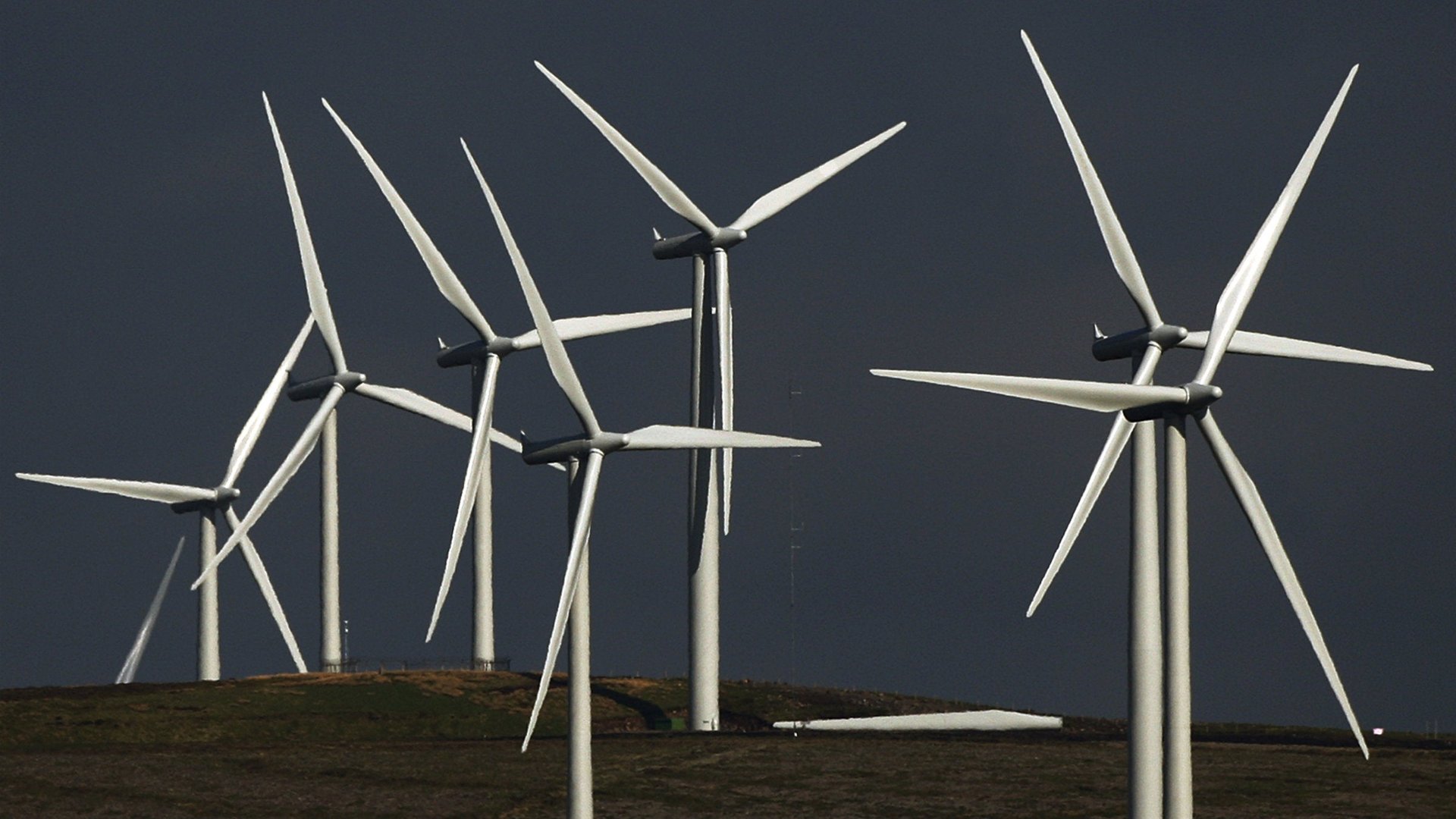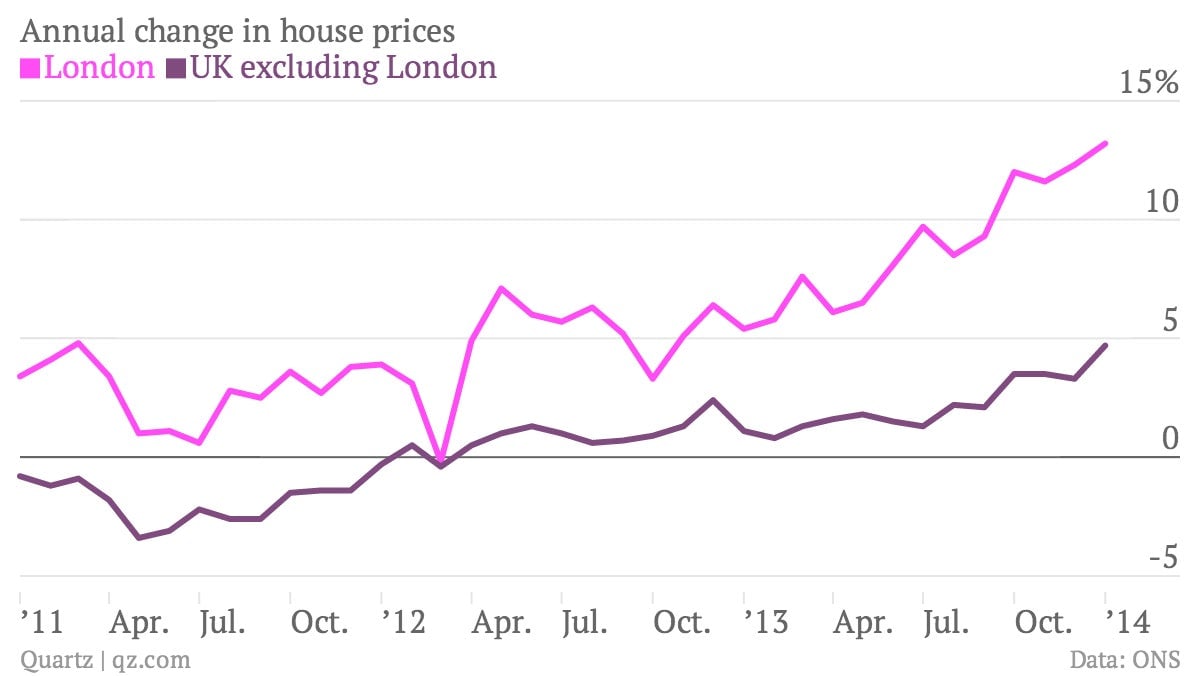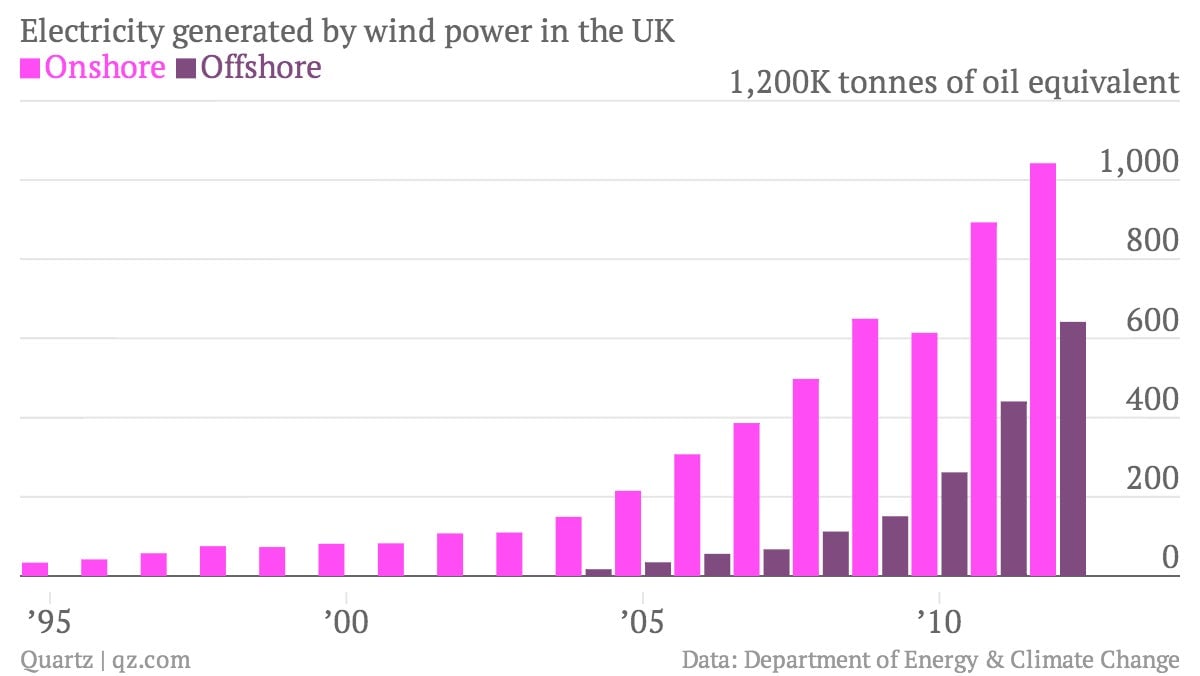One way to stop surging British house prices—build more wind farms
London property prices are soaring, and the rest of Britain isn’t doing too bad either. Fuelled by low interest rates and subsidized mortgages, prices across the country have been accelerating over the past two years:


London property prices are soaring, and the rest of Britain isn’t doing too bad either. Fuelled by low interest rates and subsidized mortgages, prices across the country have been accelerating over the past two years:

Analysts reckon that even in the frothiest markets the boom has years left to run, stoking fears of a dangerous bubble. For all of the complementary things the IMF said about the British economy in its latest forecast, it also warned it to “guard against any buildup of financial vulnerabilities, including from surging house prices.”
A new research paper highlights one way to keep property prices in check—put up some wind turbines in the neighborhood. Stephen Gibbons of the London School of Economics (LSE) looked at property sales since 2000 and found that house prices within 8 kilometers (5 miles) of visible wind farms were lower than those nearby but out of sight of the turbines. Average prices were up to 6% lower in areas with a visible wind farm within 2 kilometers, and the effect gets worse the more turbines dot the horizon—prices were 12% lower if 20 or more turbines were visible within that range.
Only 2% of residential postcodes in Britain are within 4 kilometers of wind farms, Gibbons found. Relatively few turbines are found in the heavily populated southeast, which opponents of wind power say is why a majority of Brits support building turbines, since they rarely come into contact with the installations. Generous subsidies for wind power have driven a turbine building boom in recent years:

The Conservative-led government has been cutting subsidies and introducing tougher planning processes for onshore wind farms, as many of the constituencies where opposition is strongest against the eyesores—as they see it—tend to vote Tory. Pledging an outright ban on land-based turbines may feature in the party’s election platform next year. The research purportedly proving that wind turbines hurt property prices will lend support to their cause. (The risk of spoiling coastal vistas for billionaire golf course owners does not excite the electorate in a similar way.)
The LSE’s paper contradicts research released last month that found no effect of wind farms on nearby house prices, so the jury is still out to a certain extent. And depending on how long people have owned their home, they might be sitting on big gains even with a turbine-proximity discount.
Meanwhile, the government’s opposition to onshore wind is matched by its enthusiasm for expanding the drilling for shale gas. Wind farms may be a blot on the landscape, but property owners probably won’t be too keen on earthquakes near fracking sites either.